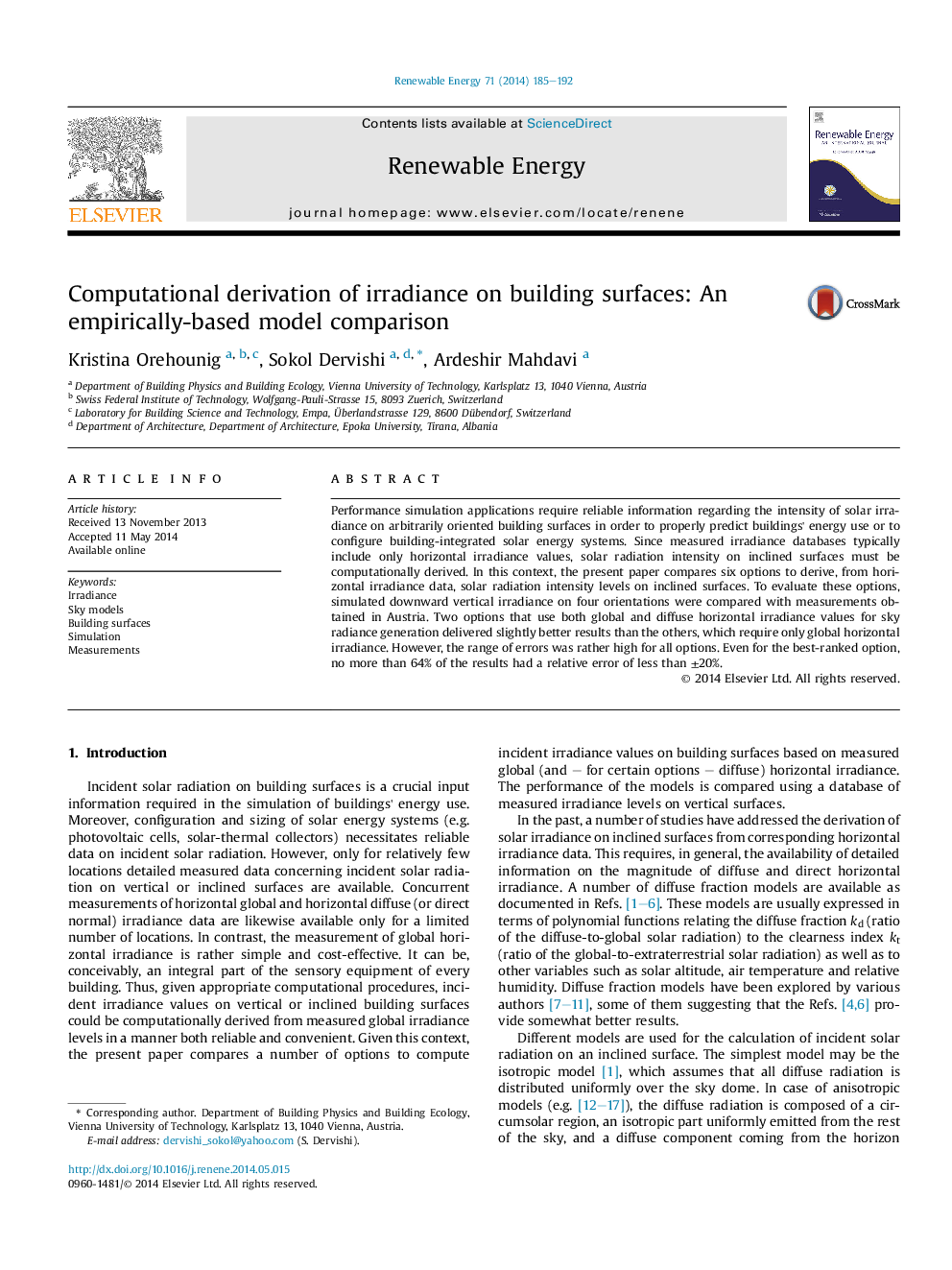| Article ID | Journal | Published Year | Pages | File Type |
|---|---|---|---|---|
| 6767970 | Renewable Energy | 2014 | 8 Pages |
Abstract
Performance simulation applications require reliable information regarding the intensity of solar irradiance on arbitrarily oriented building surfaces in order to properly predict buildings' energy use or to configure building-integrated solar energy systems. Since measured irradiance databases typically include only horizontal irradiance values, solar radiation intensity on inclined surfaces must be computationally derived. In this context, the present paper compares six options to derive, from horizontal irradiance data, solar radiation intensity levels on inclined surfaces. To evaluate these options, simulated downward vertical irradiance on four orientations were compared with measurements obtained in Austria. Two options that use both global and diffuse horizontal irradiance values for sky radiance generation delivered slightly better results than the others, which require only global horizontal irradiance. However, the range of errors was rather high for all options. Even for the best-ranked option, no more than 64% of the results had a relative error of less than ±20%.
Keywords
Related Topics
Physical Sciences and Engineering
Energy
Renewable Energy, Sustainability and the Environment
Authors
Kristina Orehounig, Sokol Dervishi, Ardeshir Mahdavi,
